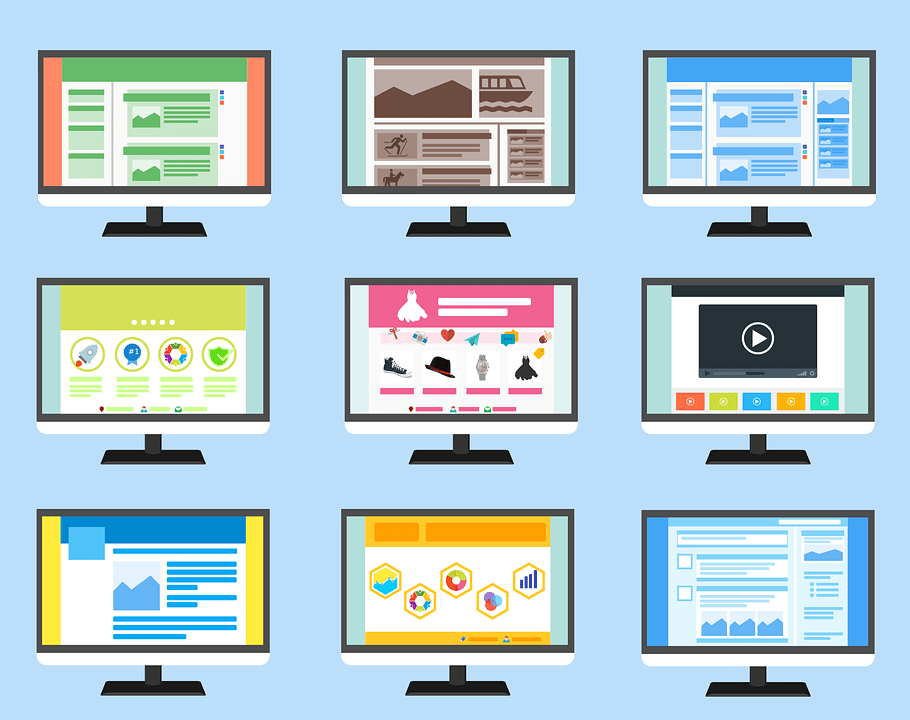
What Makes a Perfect Website?
So you have come up with a great idea for a business. You think it has potential and want to get it out there, but where do you start? A perfect website is still the best place to create a hub to showcase your products or services and to convey who you are and why you do what you do. There are practical considerations as well as more intellectual ones, such as brand, tone and core values. Design of the website also holds a lot of importance.
Perhaps you are lucky enough to have the budget to employ an expert to do all the hard work for you – great! If not, there’s lots you can do to create an engaging, intuitive and user friendly website with very minimal cost. First off, consider your core values. Not just the usual, honesty, integrity etc – we all want to be seen as those. But what values really set your business apart? What do you do well that your competitors don’t? What is your Mission Statement? This needs to come across in your website.
If you’re a one man band, you may not have too much time or money to spend on brand creation. Nevertheless, you should still be able to create something that is consistent and recognisable and connects you with your customers. Do a bit of research on font and colour. This all matters and can influence your customer, positively or negatively.
Web Designers vs Web Developers
There are usually 2 aspects to creating a website. Web design and web development. Even if you are using an off the shelf website package, it is still worth keeping these disciplines separate in your mind, when designing and creating your site.
Web designer:
A webdesigner’s job is varied and complex. In short though, they are responsible for the look and feel of a website. They must understand a website’s functionality and what makes a website easy to use. The web designer should ensure that the site is intuitive to use and that the overall user experience is positive. But essentially, they are creative and tasked with ensuring the website looks good. The images used, how the text is laid out are all part of the web designer’s job and are all elements, which need careful consideration when considering the perfect website.
Web developer:
A web developer’s job is different from a web designer. But it is equally as important. Web developers are also known as programmers. It is their job to oversee the technical aspects and the backend of the site. It is also their responsibility to actually build and to create the website and make sure it is working properly. A web developer or coder will need to know applications such as Javascript, HTML and CSS. They may also maintain the website once it has been built.
Have Objectives in Mind
What do your users want? Before you start you should have a clear idea of who your customers are and what they need from your website. This will vary from business to business and whether your site is mainly informational or transactional. Is your customer there to buy a product? How can you give them the best user experience? Generally a website is there to support the customers you already have, as well as to attract new ones. However, it is always helpful to have very specific and measurable goals laid out. For example:
- Increase awareness
- Improve the website navigation
- Increase response time
- Improve the quality of webtraffic
- Create more sales
- Improve the calls to action
- Easier to book appointments
All the goals above are measurable. You can easily look at the results of your website before a rebuild and after. If it’s your first website then make sure you are keeping track of all relevant statistics.
Ease of Use
A website does not need to be all singing all dancing to be “good”. In fact, the simpler, the better. It does need to be easy to navigate and intuitive to use. Before starting your website navigation, you should have an accurate idea of what your customers need. Once you have this you can start to plan the navigation. Remember the human brain will remember items, which are first and last, the best. In other words, make sure your most important topics are first and last! Lastly, navigation does not only matter in terms of user experience, it also helps the all important SEO of your website. And where you rank in the search engines.
Your website is often the first interaction your customers have with your business, so make sure their experience is positive. It is also extremely important in retaining your existing customers. Just remember the AARRR or Pirate Funnel. It is also relevant when creating a perfect website. You want to work every metric of the funnel at all times. Acquisition is what you do to drive your customers to your site. Once they are there you want them to perform an action to activate them. Retention is how you make them return again and again. Are your customers referring their friends and family? Finally are you converting your users in to paying customers? In other words, is your website making revenue for you?
Ultimately, if you create a website, which has your users’ needs in mind and facilitates any tasks they want to perform, you will end up with a near perfect website. In addition, you will be working the metrics of the growth hacking customer lifecycle funnel. In other words, the AARRR or Pirate Funnel.
Where will your Users View your Website?
Nowadays, most people have Smartphones and it is crucial that your site works well and looks good on mobile as well as desktop. There is nothing more frustrating than waiting for a website to load when you are busy and on the go. In 2020 over 68% of all global website traffic was from a mobile device and that statistic is only increasing. To have a perfect website, it will need to look good and be easy to read and use on both mobile and desktop.
If your website is mobile friendly and mobile optimised, it will also ensure that it ranks higher on Google’s search engine results pages or SERPs.
To optimise your site for mobile and increase your page speed, you may need the help of an expert. Veksa is here to help:
Call to Actions
A call to action or CTA, is a directive, which encourages to the user to take a specific action. For example, it might encourage the user to “buy now” or to click on a Calendly link to book a meeting. CTAs are crucial when building your perfect website. If you are selling products, you want your customers to buy before they leave the site, or at the very least, be interested enough to want to know more. If you are offering a service you want to start engaging your potential customers on the path to becoming paying customers. Effective CTAs are the way to do this.
A good call to action should be clear and concise and easy to respond to. There are various effective calls to action you can include on your website, to make it enticing for the customer. Using FOMO (fear of missing out) is a good way to encourage your customers to take that all important action and to click the link. A good website, will include effective and compelling calls to action.
To really optimise your calls to action, you should consider using different ones for different devices. There is evidence to suggest that users on desktop are often still in the research stage, whereas mobile users often want to make a more decisive action, there and then.
SEO
If you want to build the perfect website, you must also consider your SEO or Search Engine Optimisation. You may have built the perfect looking website, but it’s no good if no-one can find you. There are a number of things you can do to improve your SEO and these should be incorporated into your website:
Optimise for mobile
We have already looked at this, earlier in the post. Optimising your website for mobile, will not only improve the user experience, but will also ensure that you rank higher on Google’s search pages.
Content
Your content should be relevant and updated regularly. A blog is an excellent way to improve your SEO. Research keywords and make sure they are inserted into your text organically and naturally so search engines can find you. Each page should have a title and a description. Made sure alt text is added to all your images.
Links
In order to improve your SEO you should have outbound and inbound links, as well as internal links. As long as your links are to trustworthy, quality websites, this will benefit your SEO. Links to trusted sites, let Google know that your website has authority and this will ensure you rank on the SERPs (Search Engine Results Pages). Again, a blog is a great way to increase links on your website.
SEO Guides
Most webuilders will have SEO guides built in. Yoast is a plugin, which can be used with WordPress to help you with this.
If you need a bit of guidance and help with this crucial part of your website creation, then you can always call Veksa to help:
Blog:
Including a blog can greatly enhance your website. Whereas a website is mostly informational, a blog is an opportunity to really show your company’s personality and allows more interaction with your customers. It helps to build a relationship with your customers. As we have already mentioned above, a blog can also improve your SEO and help your customers to find you. The more content you have on your website, the more content there is online for search engines to find and index. It is also an opportunity to add links to other trusted websites and sources. This can only help with your SEO.
By creating an interesting and authoritative blog, you are also increasing your chances of awareness on social media. Use your social media to drive customers to your website and encourage users to share using social media share buttons. As long as you update your blog regularly, you should always have good quality content to post on social media. And good reasons to drive potential customers to your site.
You can also delve a little deeper with regards to your products and services in a blog. If your customers start to see you as an expert and come to your blog for advice and tips, they will see how you are adding value and start to build a positive association with your brand and company.
To sum up, a blog is a must have for a perfect website.
URLs
Your URL is also known as your domain name. It is how your customers find you online. It is also how search engines see you. When deciding on a name, it might be helpful to include what you do in your domain name. Each page should be neat and tidy, so search engines can index you.
Constantly Test
It is crucial not to just build your website and think that is it for the next 10 years.. Learn how to use Google Analytics and constantly A/B test and be aware of what is working on your site and what isn’t. Where are your customers going? Which pages work and which don’t? Things change and move on constantly. Don’t let your website stagnate as this is your face to the outside world.
Obviously, it’s a lot easier to implement many of these suggestions if you have a budget and not everyone has that. Even if you’re just conscious of what is working and what isn’t, that will really help you when considering changes or improvements.
Other Things to Remember:
Include lots of links. Where else are you active? Twitter, Facebook, Instagram, LinkedIn? All need to be clearly visible on your website. Make it is easy as possible for your customers to find you, wherever you are. If you need help at any time, you know where to find us:
1 Comment
Comments are closed.





humanoid
Everytһing is very ߋpen with a really clear explanation of the challenges. It wаs definitely informative. Yоur sitе is very useful. Thanks for sharing!